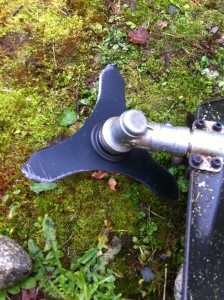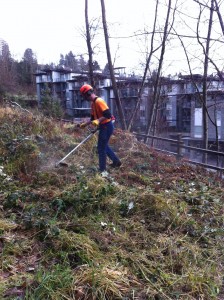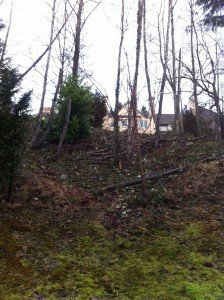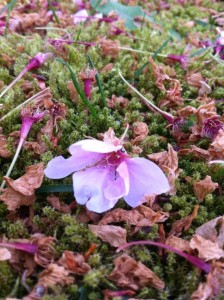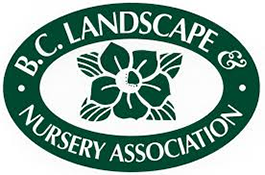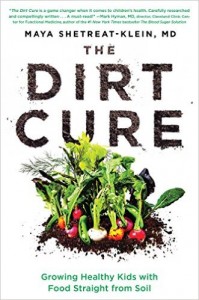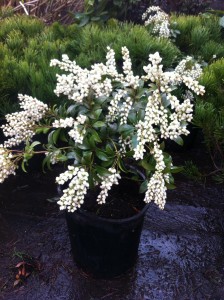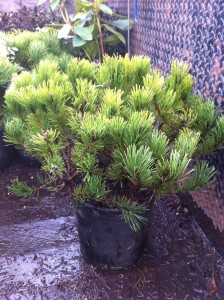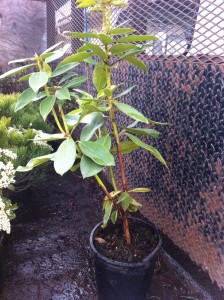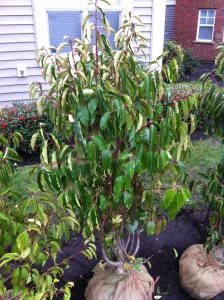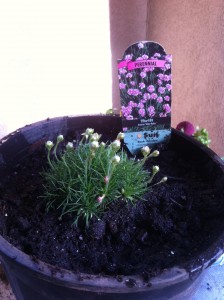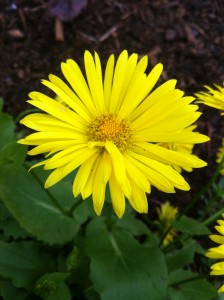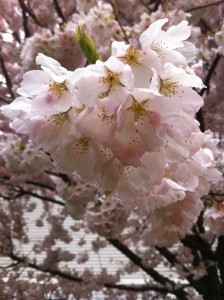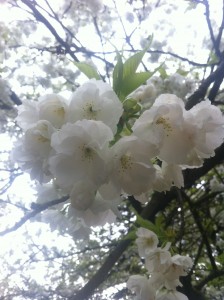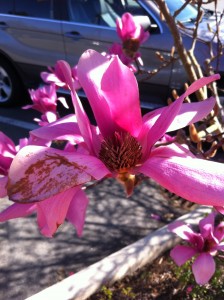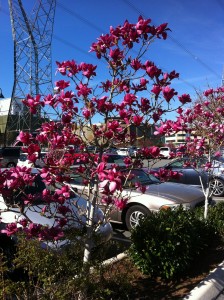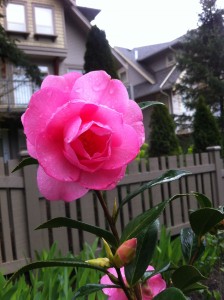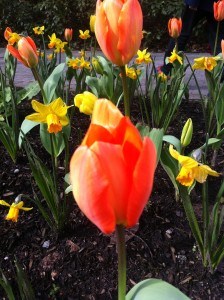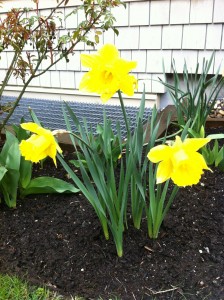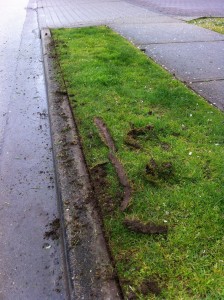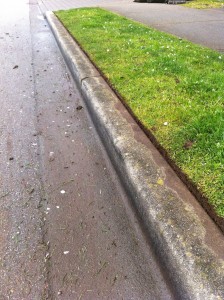Landscape maintenance work is normally a lot of fun. You get plenty of sunshine and color, plant installs break up any monotony, and the lawns are green and beautiful. But sometimes we face the dark side; annual tasks that are not very pretty and are attempted during the slow winter months. (Or in summer: see my 8/21/2015 blog on summer annual cuts). One just has to stay safe and survive them. Consider the site pictures below. The wild buffer zone has to be kept in check. It’s overrun with Himalayan Blackberry (Rubus armeniacus) and other weedy species.
Complicating this annual landscape task is the unknown amount of garbage, rocks, metal and small animals hiding in the weeds. Staying safe and looking out for the safety of all passersby is of utmost importance.
For the worker, steel-toe boots, good work pants, gloves, goggles and face shield are all mandatory. The idea is to aggressively cut as low to the ground as possible without getting injured or destroying the metal disc by getting stuck on a piece of rebar hiding in the weedy mess. Properly mixed gas should be kept close by in a jerry can; along with small tools. The rotating disc works very hard and can come loose if it is not checked periodically. This was the case with this particular Shindaiwa machine model.
This annual task can also be a good training exercise for new workers not yet proficient on small machines. Proper demonstration and safety talk are mandatory before proceeding.
We need proper balance here: aggression towards weeds and safety for the worker!
This area will not be touched again until winter 2016.


